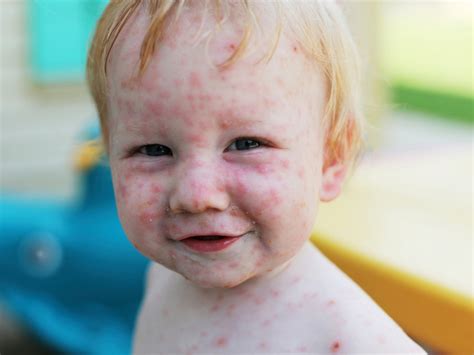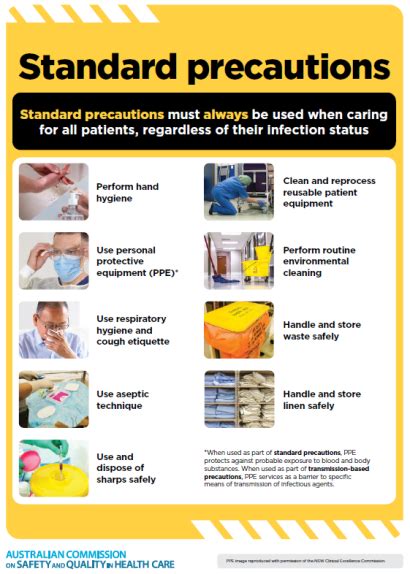Intro
Learn about MMR vaccine rash symptoms, including measles rash, mumps symptoms, and rubella side effects, to identify potential reactions and complications after vaccination.
The MMR vaccine, which protects against measles, mumps, and rubella, is a crucial component of childhood vaccination schedules worldwide. While the vaccine is highly effective in preventing these diseases, some individuals may experience side effects, including a rash. Understanding the symptoms and characteristics of an MMR vaccine rash can help alleviate concerns and promote informed decision-making about vaccination.
The MMR vaccine is administered to children at specific ages, typically around 12 to 15 months and again between 4 to 6 years. The vaccine's components work by introducing a weakened or inactivated form of the measles, mumps, and rubella viruses to the body, prompting the immune system to produce antibodies that can fight future infections. This process can sometimes lead to mild side effects, as the body responds to the presence of the vaccine antigens.
One of the less common but notable side effects of the MMR vaccine is a rash. The rash associated with the MMR vaccine can appear anywhere from a few days to a couple of weeks after vaccination. It is essential for parents and caregivers to be aware of the potential for a rash and to monitor their child's health post-vaccination. Recognizing the symptoms of an MMR vaccine rash can help in distinguishing it from other conditions and provide reassurance that, in most cases, the rash is a temporary and harmless reaction.
Understanding MMR Vaccine Rash

The MMR vaccine rash is generally characterized by its appearance as a mild, non-specific skin eruption. It can manifest in various forms, including as small, flat spots or as a more widespread, blotchy rash. The rash is often not itchy and may appear on any part of the body, although it tends to be more noticeable on the trunk and limbs. It's worth noting that the rash itself is not contagious and does not indicate that the child has contracted any of the diseases the vaccine protects against.
Causes and Risk Factors
Understanding the causes and risk factors associated with the MMR vaccine rash can help in predicting and managing its occurrence. The exact mechanisms behind the development of a rash after MMR vaccination are not fully understood but are thought to be related to the body's immune response to the vaccine antigens. Certain individuals may be more prone to experiencing a rash due to their genetic predisposition, history of allergies, or previous reactions to vaccines.Diagnosis and Treatment

Diagnosing an MMR vaccine rash typically involves a combination of clinical evaluation and medical history. Healthcare providers assess the rash's appearance, distribution, and timing in relation to the vaccination. In most cases, no specific treatment is required, as the rash resolves on its own within a few days. However, if the rash is accompanied by other concerning symptoms, such as fever, irritability, or difficulty breathing, medical attention should be sought to rule out other potential causes.
Managing Symptoms
For individuals experiencing discomfort due to the rash, several strategies can help manage symptoms. Keeping the affected area cool and clean can reduce irritation. Over-the-counter medications like acetaminophen or ibuprofen may be recommended to alleviate any associated fever or discomfort, though it's crucial to consult with a healthcare provider before administering any medication, especially to children.Prevention and Precautions

While it's not possible to completely prevent an MMR vaccine rash, being aware of the potential for a reaction can help in monitoring and responding appropriately. Individuals with a history of severe allergic reactions to previous vaccinations or components of the MMR vaccine may need to take special precautions or consider alternative vaccination strategies under the guidance of a healthcare provider.
Vaccine Safety and Efficacy
The safety and efficacy of the MMR vaccine have been extensively studied and documented. The benefits of vaccination in preventing measles, mumps, and rubella far outweigh the risks of side effects like a rash. Ensuring high vaccination rates within communities is crucial for maintaining herd immunity and protecting vulnerable populations, such as those with compromised immune systems who cannot receive live vaccines.Common Concerns and Misconceptions

Several misconceptions surround the MMR vaccine, including concerns about its safety, efficacy, and potential links to autism or other conditions. These misconceptions often stem from misinformation or a misunderstanding of scientific research. It's essential to consult reliable sources, such as the Centers for Disease Control and Prevention (CDC) or the World Health Organization (WHO), for accurate information on vaccine safety and benefits.
Addressing Vaccine Hesitancy
Vaccine hesitancy, or the reluctance to vaccinate, poses a significant challenge to public health efforts. Addressing concerns through open communication, providing accurate information, and highlighting the importance of vaccination in preventing disease outbreaks can help alleviate hesitancy. Healthcare providers play a critical role in this process, offering personalized advice and reassurance based on the latest scientific evidence.Long-Term Implications and Future Directions

The long-term implications of the MMR vaccine extend beyond individual protection to contribute to herd immunity and the global control of measles, mumps, and rubella. As vaccine technology evolves, future directions may include the development of new vaccine formulations that reduce the risk of side effects while maintaining or improving efficacy. Continuous monitoring of vaccine safety and effectiveness, along with research into the mechanisms of immune response, will be essential for advancing vaccine science.
Global Health Perspective
From a global health perspective, the MMR vaccine is a cornerstone of infectious disease prevention. Efforts to increase vaccination coverage worldwide, particularly in regions with limited access to healthcare, are critical for reducing the incidence of measles, mumps, and rubella. International collaboration, supported by organizations like the WHO and UNICEF, is vital for achieving these goals and protecting vulnerable populations from vaccine-preventable diseases.Conclusion and Next Steps

In conclusion, while the MMR vaccine rash is a potential side effect, it is generally mild and temporary. Understanding the causes, symptoms, and management of the rash can help individuals and families make informed decisions about vaccination. By staying informed, addressing misconceptions, and supporting public health initiatives, we can work together to maintain high vaccination rates and protect communities against measles, mumps, and rubella.
Final Thoughts
As we move forward, it's essential to continue the conversation about vaccine safety, efficacy, and importance. By doing so, we can foster a community that values the role of vaccination in preventing infectious diseases and promoting public health. If you have questions or concerns about the MMR vaccine or any other vaccine, we encourage you to reach out to a healthcare professional or a trusted resource for information and guidance.What is the MMR vaccine rash?
+The MMR vaccine rash is a potential side effect of the MMR vaccine, characterized by a mild, non-specific skin eruption that can appear anywhere from a few days to a couple of weeks after vaccination.
How common is the MMR vaccine rash?
+The MMR vaccine rash is considered a less common side effect, but the exact incidence can vary. It's essential to monitor for any reactions post-vaccination and consult a healthcare provider if concerns arise.
Can the MMR vaccine rash be prevented?
+While it's not possible to completely prevent the MMR vaccine rash, being aware of the potential for a reaction and monitoring post-vaccination health can help in managing symptoms and seeking medical attention if necessary.
We invite you to share your thoughts, questions, or experiences regarding the MMR vaccine rash in the comments below. Your input can help others feel more informed and supported in their vaccination decisions. Let's work together to promote vaccine awareness and public health.
